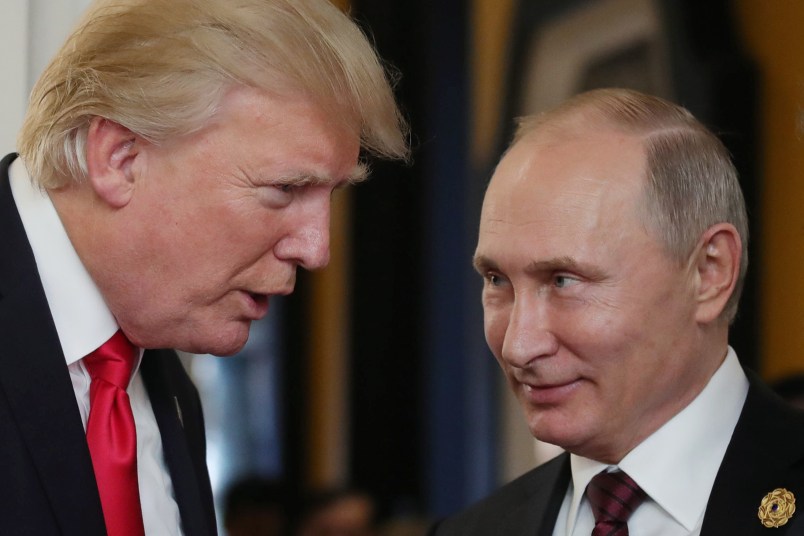Take a moment to read this column by David Ignatius in the Post. Ignatius’s column in early 2017, first revealing the calls between Michael Flynn and the then-Russia Ambassador, was a key moment in the whole Russia story. It lit a fuse that led to Flynn’s resignation only weeks later and showed for perhaps the first time that the entire Trump/Russia story – with at least some levels of collusion – was quite real. This new column has no big news revelation. What is provides is perspective, ways in which the Friday indictments are a warning to both Vladimir Putin and Donald Trump.
In the first case, one of the things that is easy to lose sight of in the 29 page indictment, precisely because it is so front and center, is just how much visibility the US seems to have into Russian intelligence operations. It is quite extraordinary. The details read more like a government’s after-action report of its own activities than intelligence gathered about an adversary government’s most secret operations. To some degree this is just the extraordinary capacities of US intelligence services, the fruits of which the public seldom gets to see in any sort of detail. But it seems like a particularly deep penetration of Russian intelligence specifically. As Ignatius notes, Putin must be wondering what else the US knows, what other operations are compromised and whether there are human as well as signals intelligence compromises they don’t know about.
From the column …
Looking at this case through a counterintelligence lens raises an intriguing new series of questions. In putting all the detail into the indictment, Mueller was giving Russian intelligence a hint of how much America can see. But this public disclosure may mask much deeper capabilities — perhaps a capacity to expose many more layers of GRU military-intelligence operations and those by the Russian civilian spy services, the FSB and the SVR. American intelligence agencies rarely tip their hand this way by disclosing so much in an indictment; clearly they did so here to send messages.
Similarly, there’s an unmistakable message to the President and those around him.
Again from Ignatius …
The indictment also sends a message to President Trump and members of his entourage who are potential targets of Mueller’s probe: Here’s a hint of what we know; how much are you willing to wager that we don’t know a lot more about Russian contacts and collusion?
He concludes with this.
And here’s a spooky final question: How much has the intelligence community told Trump about its operations against Russia? If you were one of the American intelligence officers who helped gather the information that’s included in Friday’s indictment, what would you think about the fact that Trump has asked for a private meeting first with Putin?
For all the ways in which President Trump’s rantings about a ‘deep state’ are nonsensical, the timing of this indictment simply cannot be a coincidence.
Lots of people can speculate like this and spin out interesting hypotheticals (I very much include myself here). But there are few people who I think have real insight into US intelligence and high level statecraft and have a sense of what kind of things are realistic and which are not. Ignatius is one of those.
I think we’re moving into a dangerous and critical period.






